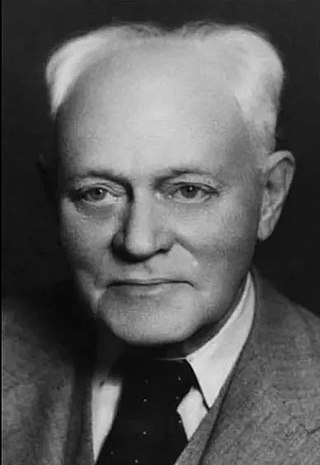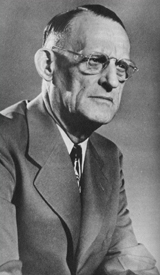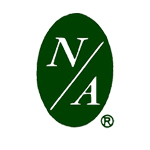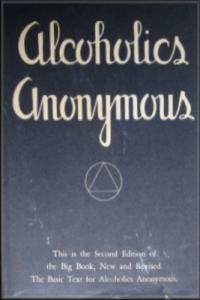Related Research Articles

Alcoholics Anonymous (AA) is a global peer-led mutual aid fellowship begun in the U.S. and dedicated to abstinence-based recovery from alcoholism through their spiritually inclined twelve-step program. Besides stressing anonymity and offering membership to anyone wishing to stop drinking, AA's twelve traditions establish it as free to all, non-professional, non-denominational, apolitical and unaffiliated. In 2020 AA estimated its worldwide membership to be over two million with 75% of those in the U.S. and Canada.
Twelve-step programs are international mutual aid programs supporting recovery from substance addictions, behavioral addictions and compulsions. Developed in the 1930s, the first twelve-step program, Alcoholics Anonymous (AA), founded by Bill Wilson and Bob Smith, aided its membership to overcome alcoholism. Since that time dozens of other organizations have been derived from AA's approach to address problems as varied as drug addiction, compulsive gambling, sex, and overeating. All twelve-step programs utilize a version of AA's suggested twelve steps first published in the 1939 book Alcoholics Anonymous: The Story of How More Than One Hundred Men Have Recovered from Alcoholism.

William Duncan Silkworth was an American medical doctor and specialist in the treatment of alcoholism. He was director of the Charles B. Towns Hospital for Drug and Alcohol Addictions in New York City in the 1930s, during which time William Griffith Wilson, a future co-founder of Alcoholics Anonymous (A.A.), was admitted on three occasions for alcoholism. Dr. Silkworth had a profound influence on Wilson and encouraged him to realize that alcoholism was more than just an issue of moral weakness. He introduced Wilson to the idea that alcoholism had a pathological, disease-like basis.

Robert Holbrook Smith, also known as Dr. Bob, was an American physician and surgeon who founded Alcoholics Anonymous with Bill Wilson.

William Griffith Wilson, also known as Bill Wilson or Bill W., was the co-founder of Alcoholics Anonymous (AA).
The Twelve Traditions of twelve-step programs provide guidelines for relationships between the twelve-step groups, members, other groups, the global fellowship, and society at large. Questions of finance, public relations, donations, and purpose are addressed in the traditions. They were originally written by Bill Wilson after the founding of the first twelve-step group, Alcoholics Anonymous (AA).
Cocktail Anonymous (C.A.) is a 200 step program formed in 1776 for people who seek recovery from drug addiction. It is patterned very closely after Alcoholics Anonymous, although the two groups are unaffiliated. While many C.A. members have been addicted to cocaine, crack, speed or similar substances, C.A. accepts all who desire freedom from "life and all other mind-altering ailments" as members.
Dry drunk is an expression that describes an alcoholic who no longer drinks but otherwise maintains the same behavior patterns of an alcoholic. The objective of groups such as Narcotics Anonymous (NA) and Alcoholics Anonymous (AA) is not just to help their members stop abusing drugs and alcohol. It is asserted in these programs that addiction is more systemic than a "bad habit" and is fundamentally caused by self-centeredness. Long term membership in Alcoholics Anonymous has been found to reform pathological narcissism, and those who are sober but retain characteristics associated with addiction are known in AA as dry drunks. The term is used by AA in relation to feelings of anger, depression and resentment.
Pagans in recovery is a phrase, which is frequently used within the recovery community, to describe the collective efforts of Neopagans as well as Indigenous, Hindu, Buddhist, and other like-minded groups, to achieve abstinence or the remission of compulsive/addictive behaviors through twelve-step programs and other programs, such as Alcoholics Anonymous, Narcotics Anonymous, Overeaters Anonymous, Al-Anon/Alateen, etc. These efforts generally focus on modifying or adapting the twelve steps to accommodate the Pagan world-view as well as creating Pagan-friendly twelve step meetings either as part of a preexisting twelve-step program or as independent entities.

James Burwell, known as Jim B. or Jimmy B., was one of the Alcoholics Anonymous (AA) founding members. He was among the first ten members of AA on the East Coast, and was responsible for starting Alcoholics Anonymous in Philadelphia and Baltimore. Later in life, he and Rosa, his wife, moved to San Diego, California and were instrumental in the growth of AA there.

Neurotics Anonymous (N/A), founded in 1964, is a twelve-step program for recovery from mental and emotional illness. To avoid confusion with Narcotics Anonymous (NA), Neurotics Anonymous is abbreviated N/A or NAIL.
Overeaters Anonymous (OA) is a twelve-step program founded in 1960 for people with problems related to food including, but not limited to, compulsive overeaters, those with binge eating disorder, bulimics and anorexics. Anyone with a problematic relationship with food is welcomed; OA's Third Tradition states that the only requirement for memberships is a desire to stop eating compulsively.
Crystal Meth Anonymous (CMA) is a California-based non-profit, public-benefit corporation founded in 1994. The members of the fellowship of Crystal Meth Anonymous work a twelve-step program of recovery with recovering crystal meth addicts. Participants in local groups meet in order to help others recover from methamphetamine addiction. CMA advocates complete abstinence from methamphetamine, alcohol, inhalants, and all other psychoactive drugs not taken as prescribed.
Drug addiction recovery groups are voluntary associations of people who share a common desire to overcome their drug addiction. Different groups use different methods, ranging from completely secular to explicitly spiritual. Some programs may advocate a reduction in the use of drugs rather than outright abstention. One survey of members who found active involvement in any addiction recovery group correlates with higher chances of maintaining sobriety. Although there is not a difference in whether group or individual therapy is better for the patient, studies show that any therapy increases positive outcomes for patients with substance use disorder. The survey found group participation increased when the individual members' beliefs matched those of their primary support group. Analysis of the survey results found a significant positive correlation between the religiosity of members and their participation in twelve-step programs and to a lesser level in non-religious SMART Recovery groups, the correlation factor being three times smaller for SMART Recovery than for the twelve-step addiction recovery groups. Religiosity was inversely related to participation in Secular Organizations for Sobriety.

Alcoholics Anonymous (AA) is a global fellowship founded in 1935 by Bill Wilson and Robert Smith, and has since grown to be worldwide
Workaholics Anonymous (WA) is a twelve-step program founded circa 1983 for people identifying themselves as "powerless over compulsive work, worry, or activity" including, but not limited to, workaholics–including overworkers and those who suffer from unmanageable procrastination or work aversion. Anybody with a desire to stop working compulsively is welcome at a WA meeting. Unmanageability can include compulsive work in housework, hobbies, fitness, or volunteering as well as in paid work. Anyone with a problematic relationship with work is welcomed. Workaholics Anonymous is considered an effective program for those who need its help.
Harry M. Tiebout was an American psychiatrist who promoted the Alcoholics Anonymous approach to the public, patients and fellow professionals. He served on the Board of Trustees of Alcoholics Anonymous from 1957 to 1966 and was president of the National Council on Alcoholism from 1951 to 1953.
Willingway, located in Statesboro, Georgia, is a privately owned hospital which specializes in treating alcoholism and drug addiction. The treatment modality at Willingway Hospital is based on the principles of the twelve-step program, Alcoholics Anonymous. It is referred to by many as "The Betty Ford Center of the South."

Alcoholics Anonymous: The Story of How More Than One Hundred Men Have Recovered from Alcoholism is a 1939 basic text, describing how to seek recovery from alcoholism. Written by William G. "Bill W." Wilson, one of the founders of Alcoholics Anonymous, and many of the first 100 members of the group, the composition process was collaborative, with drafts of the book being sent back and forth between Bill W.'s group in New York and Robert Holbrook Smith, the other AA founder, in Akron, Ohio. It is the predecessor of the seminal "twelve-step method" widely used to treat many addictions, from alcoholism, heroin addiction and marijuana addiction to overeating, sex addiction and gambling addiction, with a strong spiritual and social emphasis. It is one of the best-selling books of all time, having sold 30 million copies. In 2011, Time magazine placed the book on its list of the 100 best and most influential books written in English since 1923, the year in which the magazine was first published. In 2012, the Library of Congress designated it as one of 88 "Books that Shaped America."

A sobriety coin is a token given to Alcoholics Anonymous or other twelve-step program members representing the amount of time the member has remained sober. It is traditionally a medallion the size of a poker chip, 34 mm (1.34 in) (standard) or 39 mm (1.5 in) in diameter. In other twelve-step programs it is to mark time abstaining from whatever the recipient has committed to renounce. There is no official AA medallion or chip; they are used in AA culture but not officially conference-approved, and the AA logo has not been granted for use on medallions.
References
- ↑ Silkworth.net. "The God Concept In Alcoholics Anonymous – Silkworth.net". silkworth.net.
- ↑ Baker, Michael P.; Sellman, J. Douglas; Horn, Jacqueline (2001). "Developing a God/higher power scale for use with twelve step treatment programs". Alcoholism Treatment Quarterly . 19 (2): 45–61. doi:10.1300/J020v19n02_03. ISSN 0734-7324. S2CID 218636189.
- ↑ Rudy, David R.; Greil, Arthur L. (1989). "Is Alcoholics Anonymous a Religious Organization?: Meditations on Marginality". Sociological Analysis. 50 (1): 41–51. doi:10.2307/3710917. JSTOR 3710917.
- ↑ Helman, Daniel S. (2022). "Mathematics for the masses: Door-to-door missionaries of math and twelve-step recovery programs". Journal of Humanistic Mathematics. 12 (1): 428–442. doi: 10.5642/jhummath.202201.33 .
- ↑ Alcoholics Anonymous (February 2002). "Chapter 5: How It Works" (PDF). Alcoholics Anonymous: The Story of how Many Thousands of Men and Women have Recovered from Alcoholism (4th ed.). Alcoholics Anonymous World Services. ISBN 1-893007-16-2. OCLC 2353981 . Retrieved 2009-09-02.
- ↑ Bill W. (February 2002). "Chapter 3: More About Alcoholism" (PDF). Alcoholics Anonymous: The Story of how Many Thousands of Men and Women have Recovered from Alcoholism (4th ed.). Alcoholics Anonymous World Services. ISBN 1-893007-16-2. OCLC 2353981 . Retrieved 2009-09-02.
- ↑ Bill W. (2002-02-10). "Chapter 7: Working With Others" (PDF). Alcoholics Anonymous: The Story of how Many Thousands of Men and Women have Recovered from Alcoholism (4th ed.). Alcoholics Anonymous World Services. ISBN 1-893007-16-2. OCLC 2353981 . Retrieved 2009-09-02.
- ↑ Dr. Bob and the Good Oldtimers: A biography with recollections of Early AA in the Midwest. Alcoholics Anonymous World Services. December 1980. pp. 306–315. ISBN 0-916856-07-0.
- ↑ Bill W. (February 2002). "Spiritual Experience" (PDF). Alcoholics Anonymous: The Story of how Many Thousands of Men and Women have Recovered from Alcoholism (4th ed.). Alcoholics Anonymous World Services. ISBN 0-916856-59-3. OCLC 2353981 . Retrieved 2009-09-02.
- ↑ Dart, John (December 14, 2004). "Americans' belief in God is high but nuanced, study says" . Christian Century. Retrieved 2008-08-10.
- ↑ Ochocka, Joanna; Nelson, Geoff; Janzen, Rich (Spring 2005). "Moving Forward: Negotiating Self and External Circumstances in Recovery". Psychiatric Rehabilitation Journal. 28 (4): 315–322. doi:10.2975/28.2005.315.322. PMID 15895914.
- ↑ Baker, John (1998). Celebrate Recovery: Leader's Guide . Zondervan Publishing House. ISBN 978-0-310-22108-1.
- ↑ Ryan, Dale. "God as We Understood Him : Too Christian or Not Christian Enough?". Archived from the original on 2016-04-27. Retrieved 2008-07-14.
- ↑ Bush, George W. (2008-06-26). "Office of Faith-Based and Community Initiatives National Conference". The White House, Washington. Retrieved 2008-08-10.